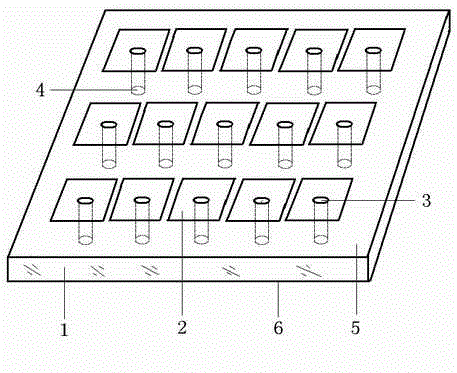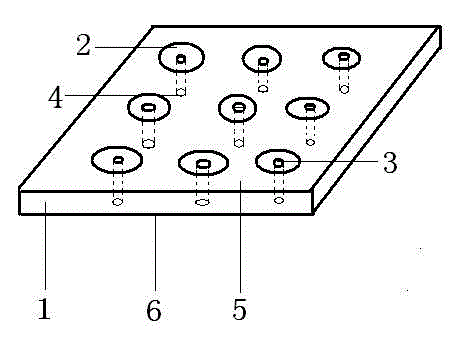Flexible matrix display device for electrogenerated luminescence of inorganic powders
A matrix display and inorganic powder technology, applied in the field of flat-panel electroluminescent display devices, can solve problems such as low yield, complicated electrode preparation, and inability to scale production
- Summary
- Abstract
- Description
- Claims
- Application Information
AI Technical Summary
Problems solved by technology
Method used
Image
Examples
Embodiment
[0050] Choose a polyimide copper foil film with a thickness of 0.05 mm, the pixel element is 1X1 mm, and the overall area is 100X100 mm.
[0051] Use barium titanate mixed with fluorine paint glue, use screen printing process to print the media layer, and dry at 100 degrees.
[0052] Use D502 luminescent material mixed with fluorine paint glue, use screen printing process to print the luminescent layer, and dry at 100 degrees.
[0053] Use ITO and PET films to make transparent conductive layers and transparent panels. Use silver glue as a transparent conductive layer electrode.
[0054] Red, blue, and green fluorescent color coatings can be printed on the outside of the transparent transparent panel, which respectively correspond to independent light-emitting pixel elements.
[0055] Using active high-voltage chips to drive its work, flexible matrix inorganic electroluminescent flat panel displays can display colorful text patterns and images.
PUM
| Property | Measurement | Unit |
|---|---|---|
| thickness | aaaaa | aaaaa |
| particle size | aaaaa | aaaaa |
| particle size | aaaaa | aaaaa |
Abstract
Description
Claims
Application Information
 Login to View More
Login to View More - R&D
- Intellectual Property
- Life Sciences
- Materials
- Tech Scout
- Unparalleled Data Quality
- Higher Quality Content
- 60% Fewer Hallucinations
Browse by: Latest US Patents, China's latest patents, Technical Efficacy Thesaurus, Application Domain, Technology Topic, Popular Technical Reports.
© 2025 PatSnap. All rights reserved.Legal|Privacy policy|Modern Slavery Act Transparency Statement|Sitemap|About US| Contact US: help@patsnap.com



